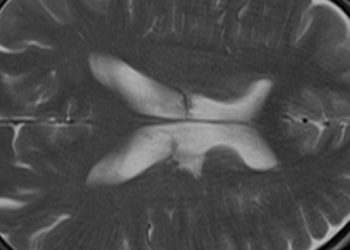2 Minute Medicine Rewind April 2, 2018
Molecular Minimal Residual Disease in Acute Myeloid Leukemia
While most patients with newly diagnosed acute myeloid leukemia (AML) experience complete remission following induction chemotherapy, relapse rates remain high. Post-remission therapies are typically chosen on the basis of genetic markers at diagnosis and flow cytometry-based detection of residual disease. Recently, next-generation sequencing for detection of molecular minimal residual disease has been proposed as a strategy to improve prediction of relapse in AML patients, although its clinical value has not yet been determined. In this prospective cohort study, next-generation sequencing was performed on samples of bone marrow or peripheral blood from 482 patients with AML at diagnosis and during complete remission, after induction therapy. The primary endpoint was the 4-year cumulative incidence of relapse. Sequencing revealed at least one mutation in 89.2% of the patients at diagnosis. Researchers also found that mutations persisted in 51.4% of those patients during complete remission. Persistent DTA mutations, the most common mutations in age-related clonal hematopoiesis, were not correlated with an increased relapse rate. However, after excluding DTA mutations, the detection of persistent mutations during complete remission was associated with a significantly increased 4-year relapse rate (55.4%) as compared to no detection (31.9%) (HR 2.14, 95% CI 1.57 to 2.91, p<0.001). Detection of persistent mutations was also associated with a significantly lower 4-year rate of relapse-free survival (36.6% vs. 58.1%, HR 1.92, 95% CI 1.46 to 2.54, p<0.001) and overall survival (41.9% vs. 66.1%, HR 2.06, 95% CI 1.52 to 2.79, p<0.001). Multivariate analysis confirmed that sequencing-based detection of non-DTA mutations has significant prognostic value with respect to rates of relapse, relapse-free survival, and overall survival. Overall, this study underlines a clinical application for the use of next-generation sequencing in the detection of molecular minimal residual disease and prognostication in AML patients.
Duration of Adjuvant Chemotherapy for State III Colon Cancer
Oxaliplatin plus fluoropyrimidine has been the standard adjuvant chemotherapy for patients with stage III colon cancer since 2004. However, severe sensory neurotoxicity can occur with increasing cumulative doses of oxaliplatin. Therefore, shorter adjuvant therapy would be preferable if efficacy could be maintained. The International Duration Evaluation of Adjuvant Therapy (IDEA) collaboration pooled data from six clinical trials of adjuvant therapy in patients with stage III colon cancer to determine whether a 3-month regimen of oxaliplatin-based therapy is non-inferior to a 6-month regimen in terms of disease-free survival at 3 years. In this pooled analysis of six randomized controlled trials, 13,025 patients with stage III colon cancer were randomized to either a 6-month or a 3-month regimen of CAPOX (capecitabine and oxaliplatin) or FOLFOX (fluorouracil, leucovorin, and oxaliplatin). No randomization according to treatment type was performed, only treatment duration. At a median follow-up of 41.8 months, non-inferiority of 3 months versus 6 months of therapy was not confirmed in the overall study population (HR 1.07, 95% CI 1.00 to 1.15, p=0.11). However, a subgroup analysis revealed that 3 months of CAPOX therapy was non-inferior to 6 months of CAPOX therapy (HR 0.95, 95% CI 0.85 to 1.06). Conversely, 6 months of FOLFOX therapy was superior to 3 months of FOLFOX therapy (HR 1.16, 95% CI 1.06 to 1.26, p=0.001). In addition, analysis of the combined regimens showed that, among the patients with low-risk cancers, 3 months of therapy was non-inferior to 6 months (HR 1.01, 95% CI 0.90 to 1.12), but in high-risk cancer, 6 months of therapy was superior to 3 months (HR 1.12, 95% CI 1.03 to 1.23, p=0.01). In summary, this study did not confirm noninferiority of a 3-month versus a 6-month regimen of adjuvant therapy for stage III colon cancer, but subgroup analysis indicates a role for a risk-based approach to determining adjuvant therapy duration. Future analyses will address potential selection biases regarding the choice of adjuvant therapy, as the observed performance difference between the CAPOX and FOLFOX regimens was an unexpected finding.
Ibrutinib plus Venetoclax for the Treatment of Mantle-Cell Lymphoma
Mantle-cell lymphoma, a B-cell cancer with a median survival of 3 to 6 years, is typically treated with intensive chemotherapy followed by either autologous stem-cell transplantation or rituximab, depending on patient age and comorbidities. Recently developed targeted therapies, such as ibrutinib (a BTK inhibitor) and venetoclax (a BCL2 inhibitor), have improved mantle-cell lymphoma response rates and progression-free survival. Preclinical models have revealed that dual inhibition of BTK and BCL2 is synergistic, warranting investigation into the clinical efficacy of ibrutinib plus venetoclax combination therapy. In this phase 2 single-arm trial, 24 patients with untreated, relapsed, or refractory mantle-cell lymphoma commenced ibrutinib monotherapy for four weeks followed by stepwise venetoclax to determine the rate of complete response at week 16 as compared to historical controls. Researchers found that, at week 16, the rate of complete response based on computed tomography was 42% (95% CI 22% to 63%), higher than the historical rate of 9% following ibrutinib monotherapy (p<0.001). Complete responses confirmed with positron emission tomography (PET) at week 16 occurred in 71% of patients (95% CI 49% to 87%). Absence of minimal residual disease in the bone-marrow was recorded by flow cytometry in 67% of patients. The estimated ongoing response rate was 78% (95% CI 59% to 100%) at 15 months, while the estimated overall survival rate was 74% (95% CI 57% to 95%) at 18 months. Low grade diarrhea and fatigue were the most common side effects, and tumor lysis syndrome occurred in two patients who commenced venetoclax at a high dose. Overall, this study demonstrates the clinical efficacy of combination ibrutinib plus venetoclax therapy in patients with mantle-cell lymphoma. An ongoing phase 3 study is investigating the potential superiority of the combination therapy to single-agent ibrutinib in mantle-cell lymphoma.
Sudden infant death syndrome (SIDS), the unexpected death of an ostensibly healthy infant, is the leading cause of post-neonatal infant death in high-income countries. Several risk factors have been identified, such as prematurity, male sex, and prone sleeping position. Central respiratory system dysfunction is also thought to contribute to SIDS, as a failure to respond appropriately to hypoxemia is considered a common final pathway. Recently, studies have linked an infantile myotonic phenotype characterized by severe respiratory compromise to gain-of-function variants of NaV1.4, a skeletal muscle voltage-gated sodium channel encoded by the gene SCN4A. In this case-control study, the frequency of rare SCN4A variants in 278 SIDS cases of European ancestry was compared to that of 729 ethnically matched controls based on whole exome sequencing data. Researchers found that the frequency of SCN4A variants in the SIDS cohort was not significantly different from the control cohort (p=0.21). However, heterologous expression studies revealed that four of the six variants in the SIDS cohort disrupted SCN4A function, while none of the variants in the control cohort disrupted SCN4A function (p=0.0057). In particular, the Arg1463Ser variant caused impaired fast inactivation of the NaV1.4 sodium channel, resulting in a gain-of-function effect consistent with previous reports. The researchers hypothesized that such a phenotype could cause myotonia of the laryngeal and respiratory muscles, causing an abrupt onset apneic crisis and ultimately precipitating SIDS. Limitations of this study include the ethnically-restricted case population, and the fact that the NaV1.4 functional analyses were only performed in vitro. Overall, this study proposes NaV1.4 channelopathies as a plausible risk factor for SIDS.
Patent ductus arteriosus (PDA) is a common cardiovascular problem in preterm infants. Complications of PDA include bronchopulmonary dysplasia and hypoperfusion, increasing the risk of life-threatening events and death. Nonsteroidal anti-inflammatory agents have been used to close hemodynamically significant PDAs to prevent such complications. The two most commonly used agents are intravenous ibuprofen and intravenous indomethacin. Due to a lack of data, however, uncertainty remains regarding the most clinically efficacious approach. This systematic review and meta-analysis comprised of 68 randomized clinical trials including 4802 preterm infants treated with either intravenous or oral formulations of indomethacin, ibuprofen, acetaminophen, placebo or no treatment control for hemodynamically significant PDA was carried out with the aim of comparing the efficacy of these treatment strategies in terms of PDA closure within 1 week of administration. Researchers found that a high dose of oral ibuprofen was associated with a significantly higher odds of PDA closure as compared to a standard dose of intravenous ibuprofen (OR 3.59, 95% CI 1.64 to 8.17) and a standard dose of intravenous indomethacin (OR 2.35, 95% CI 1.08 to 5.31). Based on ranking statistics, a high dose of oral ibuprofen was identified as the best treatment option for PDA closure and for reducing the need for surgical PDA ligation. Importantly, there was no statistically significant difference in the odds of neonatal mortality or severe complications with the use of placebo or no treatment as compared to any of the treatment modalities. As such, the researchers suggest that future studies examine placebo-controlled trials against newer pharmacologic interventions for hemodynamically significant PDAs. Taken together, this study shows that a high dose oral ibuprofen increases the likelihood of hemodynamically significant PDA closure compared to standard doses of intravenous ibuprofen or indomethacin, but also emphasizes that placebo or no treatment do not significantly change the likelihood of neonatal mortality, specifically.
Image: PD
©2019 2 Minute Medicine, Inc. All rights reserved. No works may be reproduced without expressed written consent from 2 Minute Medicine, Inc. Inquire about licensing here. No article should be construed as medical advice and is not intended as such by the authors or by 2 Minute Medicine, Inc.







